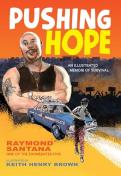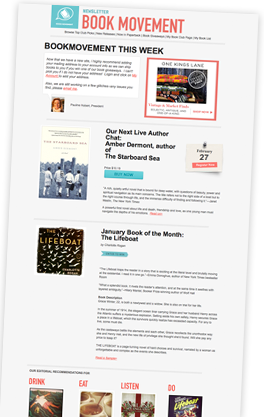BKMT READING GUIDES
Pushing Hope: An Illustrated Memoir of Survival
by Raymond Santana
Hardcover : 288 pages
0 club reading this now
0 members have read this book
“This is what justice looks like. We are told we live in an age of few if any heroes, but Raymond Santana is a real genuine hero. His story is one of unbelievable courage in the face of rampant injustice and impressive resilience as he maintains ...
Introduction
School Library Journal, starred review
“This is what justice looks like. We are told we live in an age of few if any heroes, but Raymond Santana is a real genuine hero. His story is one of unbelievable courage in the face of rampant injustice and impressive resilience as he maintains his dignity and in the face of obstacles that would destroy many of us. Bravo!” —Ken Burns, filmmaker
One of the Central Park Five reflects on his wrongful conviction—and tireless fight for his 2002 exoneration—in this moving young adult illustrated memoir.
Raymond Santana’s story is an example to teens of the power of hope and resilience—and the importance of fighting injustice to stand up for what’s right.
When Raymond Santana was just 14, he was accused of a crime he didn’t commit. The 1989 rape of a jogger in Central Park was pinned on Santana and four other young teens, a tragedy that would change their lives forever.
In this powerful illustrated memoir, Raymond Santana takes readers on a journey from his move to Harlem, to his arrest and trial, and from his time in prison to his ongoing fight for justice. Exonerated in 2002, Santana has made it his mission to fight wrongful convictions and injustice. What has sustained him and given him the strength for that fight, is his creativity—art and fashion have always been a refuge and a source of hope.
Teaming up with celebrated artist Keith Henry Brown, Raymond Santana shows in vivid color how one can survive by pushing a message of hope.
Editorial Review
No Editorial Review Currently AvailableExcerpt
THE CASE IS WEAK. There’s no physical evidence and nobody saw us. But I know we’ll be railroaded. Even our lawyers say we’ll lose. There is too much media scrutiny, and everybody thinks we are guilty. Even the Puerto Rican community has abandoned me—cancelled by pride. PEOPLE HAVE GOT TO KNOW I’M INNOCENT. Later when I am offered another plea, I would not, could not, lie. September 1990, I am sentenced to five to ten years and sent upstate to GOSHEN SECURE CENTER, a juvenile max facility. NO SURPRISES THERE. Me with 120 inmates. Shackled. Handcuffed. Put in a room for orientation. And labeled a SEX OFFENDER. WAITING. HOURS. HOURS. HOURS. Late at night I’m moved into a housing unit. No clue what to expect. No clue how to figure all this out. But I know I have to get bigger and stronger. I need a defense mechanism. And I have to watch and observe and get in line. TO SETTLE IN AT 17 AND LAST FIVE YEARS. Prison is about adjusting, adapting to this life. Especially adapting to getting an education. SCHOOL IS HARD! AND LIFE IS HARD. My mom passed when I was in prison. She would tell me how important education is. GED DONE. Associate degree DONE. But I’m still settling in and figuring out what had happened to ME. I am AWAKENED to how I was railroaded and how the system works. I write letters to the PR Defense Fund. NAACP. Sister Souljah. All without an attorney. And I read Malcolm X, Howard Zinn, and Carter Woodson. I’M CHANGING! Art that had died in Spofford surfaces at Goshen. It’s an escape from reality. Cartoons. Poetry. Graffiti. I see myself spraying colors! But my art still suffers. THIS IS PRISON! Fashion becomes another escape. Dabbling and drawing clothing lines. T-shirts. Reading the Eastbay catalog and hip-hop magazines just to look at the clothes. To see what is hot on the streets. Art is still a salvation, but it can never be as great as it could be. THIS IS PRISON! At twenty-one, and an adult, I find out what prison REALLY is. I’m sent south to Downstate Correctional Facility. I lasted six years, eight months, in Spofford, Goshen, and Downstate. And no incidents! But no parole because my case is too serious. Instead, I earn a conditional release date. The key is earning it. I’M FINALLY OUT! But I’m naïve. A twenty-one-year-old with a fear of the unknown and unsure of the future. But I have some tools. Some smarts. With an associate degree, I CAN be productive.Discussion Questions
From the publisher:1. How does Raymond Santana’s voice and the way the book is designed with the artwork shape the way you experience the story?
2. How did reading about Santana’s experience change or deepen your understanding?
3. What do you think gave Santana the strength to survive and keep going, even in the hardest times?
4. How does the title Pushing Hope reflect his journey?
5. How do Keith Henry Brown’s illustrations affect your reading experience?
6. Are there specific images that stayed with you or helped you understand the emotions of the story better?
7. The importance of home; family; friendship; loyalty; creativity; conviction; truth; and most of all hope were all woven into the book. Can you talk more about how these things shaped Raymond and helped him?
8. What lessons do you take away from Santana’s story about perseverance, speaking up, or fighting for justice?
9. Why do you think it’s important to tell these stories?
10. How does Santana’s memoir show that hope can be an act of resistance?
11. After reading this book, what actions might you or other readers feel inspired to take — in schools, communities, or conversations — to stand up against injustice?
Notes From the Author to the Bookclub
Author's note: “I was wrongly incarcerated for 7 years before I was released to maneuver and put my life back together. People ask me all the time: “How are you not bitter? How do you not get upset?” And of course, those are natural reactions. But for me, it was about channeling energy. I used to say that “the best revenge is to be successful”, and then it turned into “the best revenge is to just be happy.” I’m 50 years old now and still healing. But today I focus more on the positive side of my story. The underlying part of it is still there, but my focus now is getting my story out with the hope that it connects with people. It’s the hope that somebody learns from it, and that it saves lives.” – Raymond SantanaBook Club Recommendations
Recommended to book clubs by 0 of 0 members.
Book Club HQ to over 90,000+ book clubs and ready to welcome yours.
Get free weekly updates on top club picks, book giveaways, author events and more








